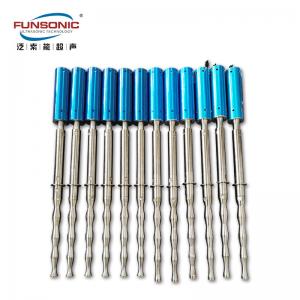

Add to Cart
20Khz Ultrasonic Defoaming Degassing Acoustic Chemistry Equipment Sonochemical Reaction
Description:
Ultrasonic defoaming sonochemistry refers to the process of using the power of ultrasound to promote the formation and disintegration of bubbles, as well as the application of ultrasound in sonochemical reactions. When bubbles exist in a liquid, the mechanical action of ultrasound can affect the behavior of bubbles, including promoting their formation and disintegration, thereby generating a series of effects in sonochemical reactions.
Ultrasonic defoaming sonochemistry has a wide range of applications in chemical synthesis, catalytic reactions, dissolution, and extraction. By selecting ultrasonic parameters reasonably, such as frequency, power, and processing time, the best defoaming and sonochemical effects can be achieved.
Parameters:
| Model | FSD-2030-GI |
| Name | 20Khz Industrial Liquid Ultrasonic Processing |
| Frequency | 20Khz |
| Power | 3000w |
| Input Voltage | 220V±10%,50/60Hz |
| Emitter Materials | Titanium Alloy |
| Diameters of Emitter Tip | Φ38mm, Φ50mm |
| Durable Temperature | 0-80℃ |
| Application | Ultrasonic extraction, dispersion, emulsification, defoaming, crushing, stirring |
The process of ultrasonic defoaming is as follows:
1. Bubble formation: The vibration of ultrasound can cause local pressure changes in the liquid. When the pressure drops below the saturated vapor pressure, the gas in the liquid will form bubbles. The vibration effect of ultrasound can promote the escape of gas from the liquid and form bubbles.
2. Collapse of bubbles: The high-intensity vibration of ultrasound can generate intense eddy currents and local flows, which exert shear forces on bubbles and promote their collapse. When a bubble is subjected to ultrasound, the liquid inside the bubble undergoes violent eddy currents and turbulent motion, leading to the rupture and disintegration of the bubble.
20Khz Ultrasonic Defoaming Degassing Acoustic Chemistry Equipment Sonochemical Reaction
